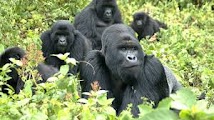Ever
heard of Dian Fossey or you need to know more about her conservation work? Around
the 70s, 80s and 90s, the survival of Apes in Africa had the darkest bit of
history. Gorillas and chimpanzees continuously encountered conflict,
persecution and poaching from all kinds of humans. Credit then goes to Dian
Fossey and Jane Goodall under the guidance of Louis Leakey a fact that the
world got to know about their plight in the wild. When Jane Goodall had succeeded
in her research on chimpanzees in Gombe Tanzania, Leaky felt that a same study
be conducted on mountain gorillas within the Virunga Area and Orangutans
Indonesia. Goodall was passion for chimpanzees helped her during her research
on complex behavior from these large apes. She discovered that these great apes
live in societies and had many traits which include among others waging war
against the neighboring rivals. She also managed to come up with how
compassionate, affectionate and inventive chimpanzees are. The two then became
great primatologists recognized worldwide.
Dian
Fossey was born in 1932; California but later grew up with a very strict step
dad who was also a business. She didn’t have that parental love something that
made love animals instead. She set off for a 7 week tour to Africa where she
paid a visit to Tsavo National Park, Mount Mikeno, Lake Manyara, Ngorongoro
Crater and Olduvai Gorge. At Olduvai Gorge, she met Leakey family who briefed
her on Jane Goodall and her work with chimpanzees in Gombe. Her first sight at
the rare mountain gorillas while on wildlife and gorilla safari in Uganda during
her first visit. From Uganda, she spent some time in Rhodesia and later went to
Louisville. Several articles were written by her and this impressed Leaky when
she had her presentation. She learnt most of the gorillas’ behaviors.
She
played exceptional role towards conservation of these critically endangered apes
and conducted research. She established Karisoke research center to aid her
work on primate conservation however, she still faced challenges across
different parties. In order to keep Dian Fossey’s work vibrant, there is Dian
Fossey International Fund which was founded to continue with her duties. Her
work is worth appreciating a fact that today, these critically endangered apes
have increased in number and the world boasts of more than a 1000 individuals.


